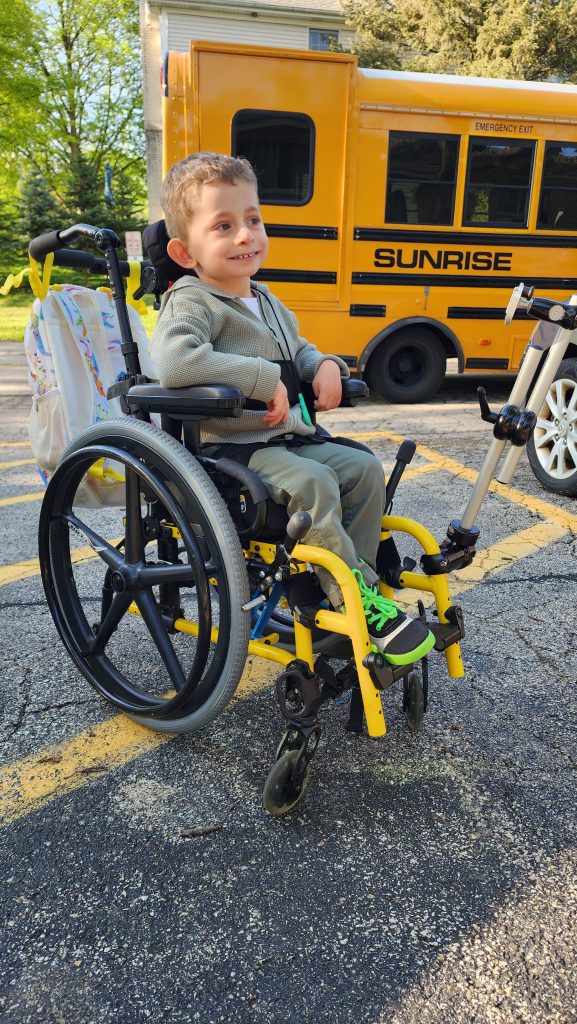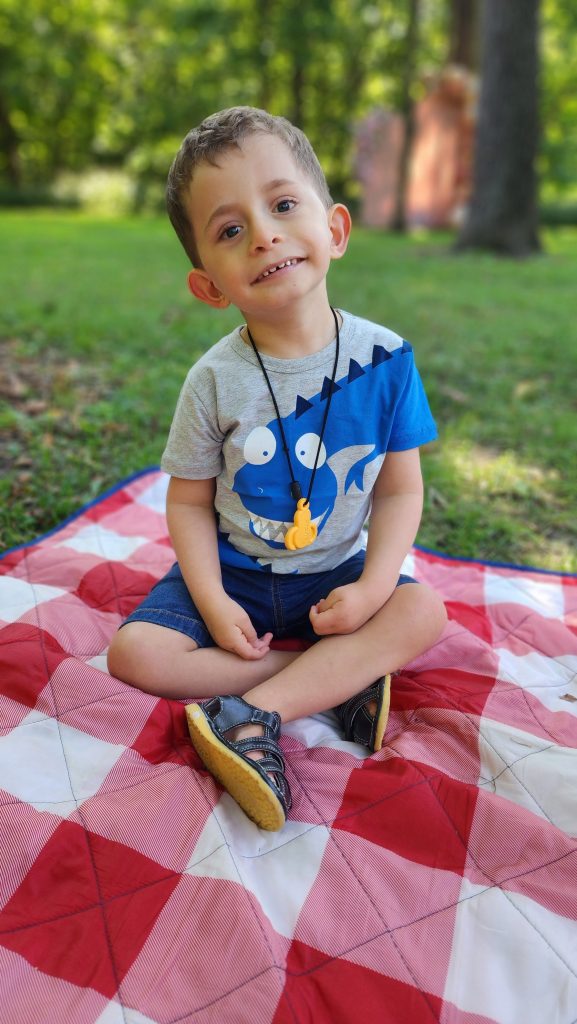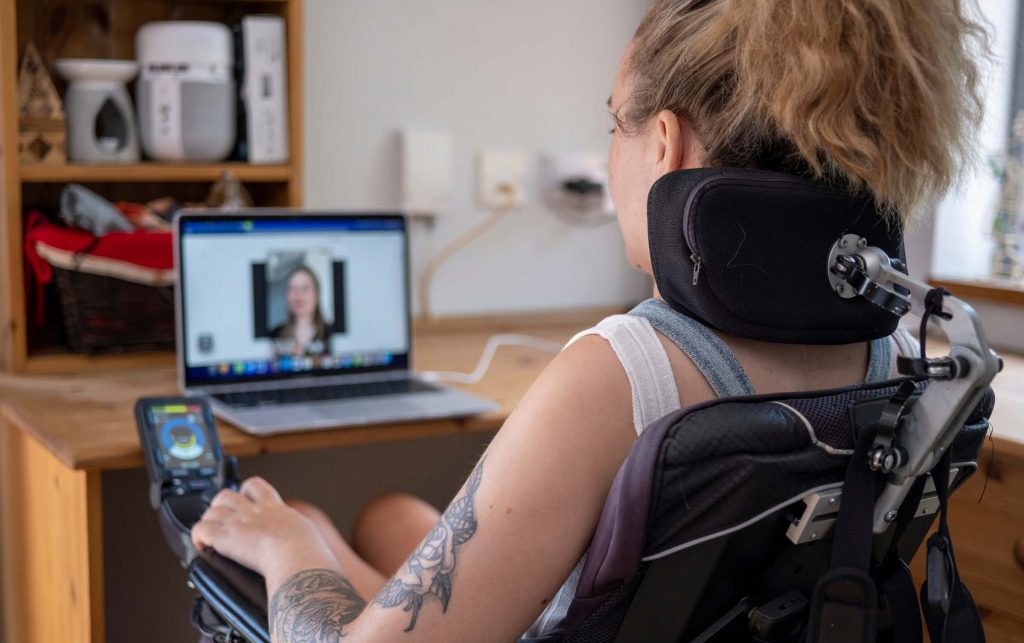Back to School with Confidence
Navigating the Transition from Summer to School for CRT Users


It’s back-to-school season, and the transition from a relaxed summer schedule to the more structured school year is a struggle for any student. But for kids who are also complex rehabilitation technology (CRT) users, making that transition can take a bit more planning.
We recently talked to Cristina Stanila, a Chicago-area mom, who’s hard at work prepping her soon-to-be 5-year-old, Matthew, for the upcoming school year. Matthew, who has a rare genetic disorder called Chromosome 8P and a number of related conditions, is in his third year of preschool and uses a wheelchair for mobility.
Tips for A Successful Transition from Summer to School
- Transition slowly. Give your child time to adjust.
- Create a schedule that works best for your child and his or her needs.
- Talk about upcoming changes so your child knows what to expect.
- Keep bedtimes and wake-up times consistent throughout the year.
- Practice with new equipment before the school year starts.
- Talk to teachers and aides ahead of time about your child’s needs and equipment.
- Get a back-to-school equipment tune-up.
Matthew’s School Year Schedule
Matthew goes to preschool every weekday, but may leave a little early or get dropped off a little later, depending on his therapy appointments for the day.
Knowing therapy—which for Matthew includes physical and occupational therapy, speech and feeding therapy, aqua therapy and more—and a full day of school can be exhausting, Matthew’s parents try to schedule his therapy early in the day. Matthew also completes several longer stints of intensive therapy throughout the school year, so he usually takes time away from school during these times.
“During those times, he has between two to four hours of therapy per day,” she says. “Adding in school at that time would be too much for him.”

Navigating Change
This year, Matthew will be attending a different school, with a new teacher and unfamiliar staff. Cristina feels a bit anxious about the change and worries about how it will affect Matthew.
“He does like routine, and he loves people, but he loves people he knows,” she says. “It will be a struggle for him to get used to the new staff and the new school. We’ll probably start slowly to give him time to get used to it.”
In addition to taking things slowly, Cristina also talks to Matthew about the upcoming changes, even though he doesn’t speak.
“I tell him about the changes that are going to happen and how those changes might make him feel,” she says. “I assure him that I will make sure he’ll get the care he needs, even when he’s at school and about the new friends he’ll make and the new, exciting things he’ll learn.”
Consistency really is key, Cristina says, which is why their family strives to keep Matthew’s bedtime and wake-up times the same during the summer and the school year.
“The new schedule can be stressful enough, and the transition from a more relaxed schedule to a busy one can be tough,” she says. “That’s why I believe that keeping the same wake-up time and bedtime consistent is the first step to a successful start of the year.”
Creating an Optimal Learning Environment
If your child is using new equipment, Cristina suggests getting in a little practice before the school year starts.
“Start using it in familiar environments and fun activities,” she says.
The start of the school year is also a great time for a chair tune-up. Set up an appointment with your Assistive Technology Professional (ATP) to make sure the chair still fits your growing child well, Cristina advises.
“I make sure the foot support is at the appropriate height for him and the same with the head support and chest strap,” she says. “Don’t forget to check if the tires need air.”
Dennis Ponczek, the assistive technology professional (ATP) and branch manager who works with Cristina and Matthew, agrees, but encourages parents to schedule evaluations for growth adjustments sooner rather than later.
“Many evaluating clinics are scheduled weeks in advance and the process to get new parts can take a couple of months,” he says. “So don’t wait until the week before school starts to schedule an evaluation.”
Cristina also tries to make sure Matthew’s teachers have a baseline understanding of his mobility equipment and what to do if something breaks or isn’t working correctly.
“I always tell the teachers or aides that if anything breaks or they’re struggling to unbuckle a belt to take him out, it’s best to call me,” she says.
Above all, Cristina says that parents can be their child’s best advocate.
“Your child has the same rights as everyone else,” she says. “They have to have access to the same areas as other children, and the school has to be accessible for all children.”
To learn more, Cristina suggests reaching out to a Special Needs Advocate in your area who can help explain your rights and how to navigate any situations you may face.
Related Articles
Back to School with Confidence
Navigating the Transition from Summer to School for CRT Users It’s back-to-school season, and the transition from a relaxed summer schedule to the more structured…
CRT Repair: Resolution, Repair & the Heart of the Matter
The Mobility Management podcast interview sheds light on the multifaceted challenges and urgent need for reforms in the repair and maintenance of Complex Rehab Technology…
Tips for Traveling with Your Wheelchair
Planning an upcoming trip? Perkowski, Morris and Lengel all suggested a few steps you can take to protect your wheelchair while flying. To learn more…


